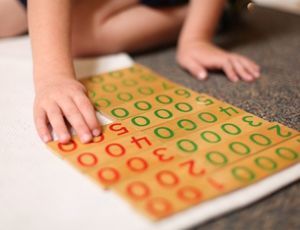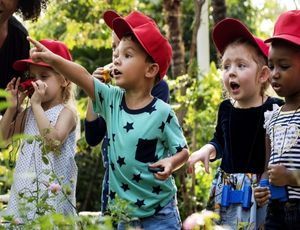Bringing Restorative Discipline Home
By Jennifer Cattell
Why do children behave? If you ask your children what will happen if you break a rule at school, their most common answer will be, “I’ll get in trouble.” If you ask further what does that mean, many will just shrug their shoulders. We all remember as young children breaking rules. Oftentimes, you broke a rule and you had a consequence. If you were like me you often thought, “Just tell me what my consequence is so I can move on with my day.” And like children today, we chose to act morally and follow societal guidelines or learn to manipulate.

But what if there was an alternative? What if we focused on values first, rules second. I am suggesting, “What if we connect first and discipline second?” Discipline is educating a child in the appropriate or acceptable ways to behave in society. Restorative discipline is training up the child how to communicate with others through their actions and words.
When parents ask for support with their child’s behavior, I often respond, “You parent their heart.” I have always believed you can not develop a relationship with rules, but you can with values. The belief that one’s heart is the control center of life. Essentially, teaching children accountability and responsibility for their mistakes. Focus on making things right, not just punishing the actions. At its core, restorative discipline aims to repair relationships and get to the root of the problem. Children are able to see the whole scope of their actions and take the initiative to repair the damage. Restorative discipline teaches children that a choice they made in a moment does not define who they are. Parents can practice restorative discipline in the home by:
Hold Family Meetings
Family meetings are a proactive way to check in with each other and prevent problems from happening. It demonstrates to the child the importance of carving out time to spend with people you love to connect and communicate.
Create a Respect Agreement
Respect Agreements are a way to create structure for how family members will engage with each other to reduce conflict and promote problem solving. Everyone is involved in the process to set guidelines for how children will show respect for each other and their parents, how parents will show respect for each other and their children, and how everyone will show respect for the home environment.
Tell Stories from Your Childhood
Young children often think in terms of good and bad. If I do the right thing, I am good; If I do the wrong thing, I am bad. Sometimes older children rationalize their behavior- If he would not have taken my car, I wouldn’t have hit him. By connecting through stories from your childhood, you are allowing your children to see that you too are fallible. The take away for your children will be that although you made mistakes, you were brave enough to take the steps necessary to restore the relationship with that person. Children also see that they can do something positive moving forward to fix their mistake. It also empowers them with the belief that, “I can build meaningful relationships with people.”
Ask the Right Questions
Remember, it is about connecting. Avoid questions that may elicit a yes or no answer. A few examples that may help guide the conversation:
- Tell me what happened?
- When that was happening, what were you feeling?
- What did you think was happening or going to happen?
- Since then, have your thoughts or feelings changed?
- Who else might have been affected?
- What do you think they are thinking or feeling now?
- What part do you share in the situation?
- What part does the other person share?
- What do you think needs to be done to make it right?
- What plan do you think you want to try?
Hit the Pause Button
Restorative discipline is a thoughtful approach. Decisions are never hastily made. It is fair for both parents and children to take time to think about the whole situation before deciding what the next steps are. Parents may say, “I never thought I would encounter this happening in our home. I think we need to think about the situation and what the next steps will be. Let’s meet in a little while. Until then, why don’t you take some time to think about the events that took place.
Call for a Do Over
The Do Over approach works well when children are learning to control their impulses. At times, children will have an impulsive reaction and react emotionally. Children must teach children impulse control. Parents do so by helping their children to slow down, think about the situation, and role play appropriate ways to express their emotions. For example, if a child walks into the living room, and says, “Why did you let Johnny in my room. My toys are now destroyed. I hate having a little brother.” Simply acknowledge the child’s feelings and provide corrective feedback, “I hear the frustration in your voice, however the way you are speaking to me is disrespectful. Let’s try a do over. Walk out of the room and then re-enter. This time say, ‘Mom, can we talk? I am really frustrated right now. Then we will sit and talk.” If a child refuses to listen, simply say, “Let’s allow you some alone time to be with your feelings. Once you feel you can return to the living room and calmly talk, I would love to spend time listening.” Then provide the child space to do so. It is important for adults to not allow their child’s emotions to become entangled. Adults need to model patience and emotional stability in high stress moments.
It is important to note that children need quite a few opportunities to practice their new tools before they become part of who they are. But with consistency and appropriate modeling, they will. With young children, parents may need to provide children the language needed to express themself. Sometimes children have difficulty bridging their feelings with what they are expected to do. By devoting the time to helping your child work through the situation and allowing them to restore the damaged relationship, you are sending a power message that relationships matter.
In the end, you are helping your child become socially aware and responsible individuals. Ones that are able to take responsibility for their own actions and impact future generations. Maria Montessori wrote, “We shall walk together on this path of life, for all things are part of the universe and are connected with each other to form one whole unity.”






